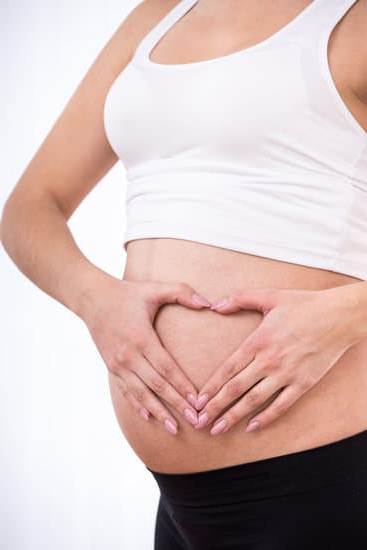How long are cats pregnancy? The feline reproductive system is a complex and fascinating aspect of cat biology. Understanding how pregnancy functions in cats can help owners provide the best care for their pregnant feline companions. From recognizing the signs of pregnancy to preparing for the arrival of kittens, there are many important factors to consider when it comes to cat pregnancy.
Cats, like many mammals, go through a period of gestation before giving birth to their offspring. It is essential for cat owners to be aware of the signs that indicate their pet may be pregnant. By knowing what to look out for, such as changes in behavior, appetite, and physical appearance, owners can ensure that their pregnant cat receives the appropriate care and attention she needs during this crucial time.
Throughout the stages of cat pregnancy, there are key milestones and developments that occur which contribute to the overall health and well-being of both the mother cat and her unborn kittens. From conception to birth, each phase plays a vital role in the successful delivery of healthy kittens. By understanding these stages in detail, owners can better prepare themselves for what lies ahead during their cat’s pregnancy journey.
Signs of Pregnancy in Cats
When it comes to feline reproductive health, it is essential for cat owners to be aware of the signs of pregnancy in their cats. This knowledge not only helps in providing proper care and attention to the expecting mother but also ensures a smooth transition into motherhood. So, how long are cats pregnancies? The answer lies in understanding the signs that indicate your cat may be pregnant.
Physical Signs
One of the most noticeable physical signs of pregnancy in cats is a change in their nipples. Around 15-18 days into pregnancy, a cat’s nipples will become pinker and more prominent. Additionally, some cats may exhibit a slight rounding or swelling of their abdomen as the pregnancy progresses. However, these changes may vary depending on individual cats and their body types.
Behavioral Changes
Pregnant cats may display certain behavioral changes that can clue you in on their condition. Some cats become more affectionate during pregnancy, seeking extra attention from their owners. On the other hand, some expectant mothers may become more reserved or irritable. Paying attention to these shifts in behavior can help you determine if your cat is pregnant.
Veterinary Confirmation
While observing physical and behavioral signs can provide a good indication of pregnancy, it is essential to seek confirmation from a veterinarian. A vet can perform tests such as ultrasound or palpation to confirm pregnancy as early as 15-18 days after conception. Consulting with a professional will also ensure that you receive proper guidance on caring for your pregnant cat throughout her gestation period.
The Stages of Cat Pregnancy
The gestation period for cats typically lasts between 63 to 67 days, with the average length being around 65 days. It is essential for cat owners to be aware of the stages of a cat’s pregnancy to ensure the health and well-being of both the mother cat and her future kittens. Cat pregnancy can be divided into three main stages: early, middle, and late pregnancy.
During the early stage of pregnancy, which lasts approximately 2-3 weeks, there may not be many visible signs of pregnancy in a cat. However, some common indicators include changes in behavior such as increased affection or appetite. A visit to the veterinarian during this time can help confirm whether your cat is pregnant through methods such as ultrasound or hormone testing.
The middle stage of cat pregnancy spans from approximately week 4 to week 6. This is when physical changes become more apparent, with the mother cat’s abdomen beginning to enlarge as the kittens grow inside her. It is crucial to provide proper nutrition during this stage to support the developing fetuses. Additionally, regular check-ups with a veterinarian can help monitor the progress of the pregnancy and address any potential complications that may arise.
| Stage | Duration | Main Characteristics |
|---|---|---|
| Early Pregnancy | 2-3 weeks | Changes in behavior, subtle physical changes |
| Middle Pregnancy | Week 4 – Week 6 | Visible enlargement of abdomen, increased need for nutrition |
Cat Pregnancy Timeline
Cat pregnancy is an exciting journey that typically lasts between 63 to 65 days from conception to birth. Understanding the different stages of cat pregnancy can help pet owners prepare and provide the best care for their feline companion during this special time. Below is a timeline of cat pregnancy, from the moment of conception to the arrival of adorable kittens:
Cat Pregnancy Timeline
- Conception (Week 0): The cat’s heat cycle begins, and mating occurs. Fertilization takes place in the oviducts, with the eggs then traveling to the uterus for implantation.
- Embryo Development (Weeks 1-4): During this early stage, the embryos develop rapidly. By around day 16, the veterinarian may be able to confirm the pregnancy through palpation or ultrasound.
- Fetal Growth (Weeks 4-6): The fetuses continue to grow and develop limbs, organs, and fur. It is essential to provide a nutritious diet for the mama cat during this crucial period.
- Preparation for Birth (Weeks 6-9): As the due date approaches, the pregnant cat may start nesting and become more restless. Owners should set up a comfortable birthing area for their feline friend.
- Labor and Birth (Day 63-65): The queen will go into labor, experiencing contractions as she delivers each kitten. Owners should be prepared to provide support but allow nature to take its course.
As each stage of cat pregnancy unfolds, it is essential for pet owners to monitor their feline companion closely and provide necessary care and support along the way. From conception to birth, being prepared and informed can make all the difference in ensuring a safe and successful delivery for both mama cat and her precious kittens.
Nutrition During Cat Pregnancy
During the exciting journey of cat pregnancy, nutrition plays a crucial role in ensuring the health and well-being of both the mother cat and her unborn kittens. It is essential to provide your pregnant cat with a balanced and high-quality diet that meets her increased nutritional needs during this time.
A pregnant cat’s calorie requirements can increase by up to 25% to 50% compared to her non-pregnant state, depending on the stage of pregnancy and the number of kittens she is carrying.
Protein is a vital component of a pregnant cat’s diet as it is essential for the growth and development of the developing kittens. High-quality proteins from sources such as meat, poultry, or fish should be included in your pregnant cat’s meals to ensure she is receiving adequate nutrition. Additionally, omega-3 fatty acids are beneficial for brain development in kittens, so incorporating sources like fish oil or flaxseed into your cat’s diet can be advantageous.
It is also important to provide your pregnant cat with access to clean and fresh water at all times to prevent dehydration, especially as her body works hard to support both herself and her growing litter. As always, consult with your veterinarian to determine the best diet plan for your pregnant cat based on her individual needs and circumstances.
By providing proper nutrition during this critical time, you can help support a healthy pregnancy and set the stage for robust kittens upon birth.
| Component | Importance |
|---|---|
| Protein | Essential for growth and development of kittens |
| Omega-3 Fatty Acids | Beneficial for brain development in kittens |
| Water | Prevents dehydration in pregnant cats |
Preparing for the Arrival of Kittens
When preparing for the arrival of kittens, setting up a comfortable birthing area is crucial to ensure the well-being of both the mother cat and her offspring. Creating a safe and cozy space for the birthing process can help reduce stress for the cat and provide a suitable environment for the new family.
Choosing the Right Location
Selecting an appropriate location for the birthing area is essential. It should be quiet, warm, and secluded to give the mother cat privacy during labor. A quiet room away from high traffic areas in the house is ideal, as it will minimize disruptions and create a peaceful atmosphere for the birth.
Creating a Comfortable Nest
Provide soft bedding such as towels or blankets for the mother cat to nest in during labor. A cozy nest will help keep her comfortable and provide a warm, inviting space for her to give birth. Make sure to regularly clean and change the bedding as needed to maintain hygiene throughout the process.
Preparing Supplies
Gather all necessary supplies ahead of time, including clean towels, heating pads (set on low), gloves, sterile scissors (for cutting umbilical cords if needed), and a digital thermometer. Having these items readily available will ensure that you are prepared for any situation that may arise during labor and delivery. By setting up a comfortable birthing area with all the necessary supplies, you can help ensure a smooth and stress-free experience for your cat during this exciting time.
Labor and Delivery in Cats
As your pregnant cat gets closer to her due date, it’s important to be prepared for the labor and delivery process. Knowing what to expect can help you provide the necessary care and support during this critical time. Here is a breakdown of what typically happens during the birthing process for cats:
1. Early Signs of Labor: About 24-48 hours before giving birth, your cat may start showing signs of restlessness, nesting behavior, vocalization, and loss of appetite. These early signs indicate that labor is imminent, and you should start preparing for the arrival of kittens.
2. Stage One of Labor: The first stage of labor in cats can last anywhere from 12-24 hours. During this phase, your cat may exhibit panting, pacing, and restlessness as her body prepares for birth. She may also start producing vaginal discharge or licking her genital area more frequently.
3. Stage Two of Labor: Once stage one is complete, stage two begins with active labor and delivery of kittens. This stage can last anywhere from 10 minutes to an hour per kitten. Your cat will push and strain as each kitten is born, followed by cleaning the newborns and removing the placenta.
It’s essential to monitor your cat closely during labor and delivery to ensure everything is progressing normally. However, if you notice any signs of distress or prolonged periods between kitten births (more than two hours), contact your veterinarian immediately for assistance.
Postnatal Care for Mama Cat and Her Kittens
In conclusion, proper postnatal care for a mama cat and her kittens is essential in ensuring a healthy start for the entire feline family. After giving birth, it is crucial to provide the mother cat with a comfortable and quiet place to rest and nurse her kittens. This will allow her to recover from labor and delivery while also bonding with her newborns.
Additionally, monitoring the health and development of the kittens is vital during the postnatal period. Regular check-ups with a veterinarian can help ensure that the kittens are growing properly and receiving all necessary vaccinations. Providing a nutritious diet for both mama cat and her kittens will also contribute to their overall well-being.
Overall, creating a warm and safe environment for mama cat and her kittens, along with providing proper veterinary care and nutrition, will set the foundation for a healthy start in life. By following these tips for postnatal care, cat owners can help their feline companions thrive during this critical period after birth.
Frequently Asked Questions
How Many Months Is a Cat Pregnant?
The gestation period for a cat typically lasts around 9 weeks, which is equivalent to about two months. However, this can vary slightly depending on the individual cat and other factors.
How Can I Tell How Far Pregnant My Cat Is?
To determine how far along your cat is in her pregnancy, you can observe physical signs such as weight gain, changes in behavior, and an enlarging abdomen. Also, a veterinarian can perform an ultrasound or palpation to give you a more accurate estimate.
How Many Kittens Will My Cat Have First Time?
A first-time mother cat, also known as a queen, usually gives birth to a relatively small litter compared to subsequent pregnancies. On average, first-time queens may have between one to four kittens. However, this number can vary widely based on various factors like breed and health of the mother cat.

Welcome to my fertility blog. This is a space where I will be sharing my experiences as I navigate through the world of fertility treatments, as well as provide information and resources about fertility and pregnancy.





